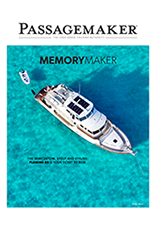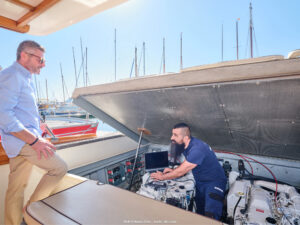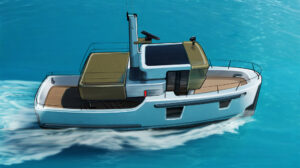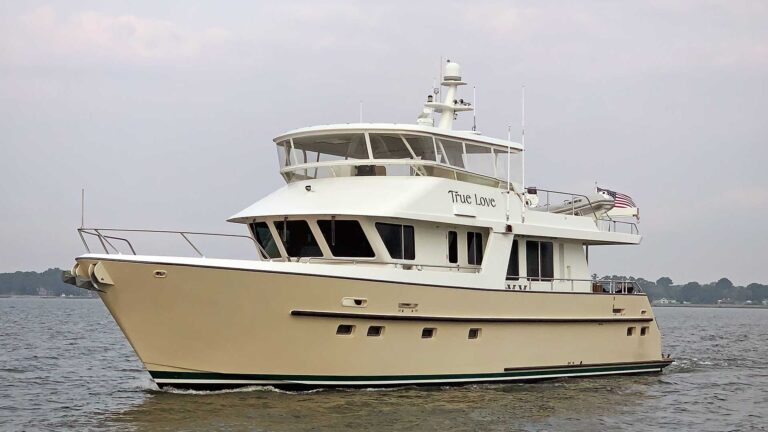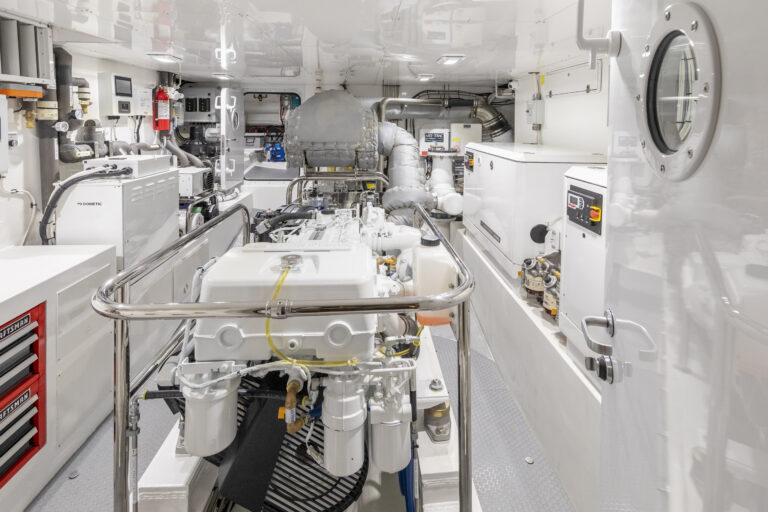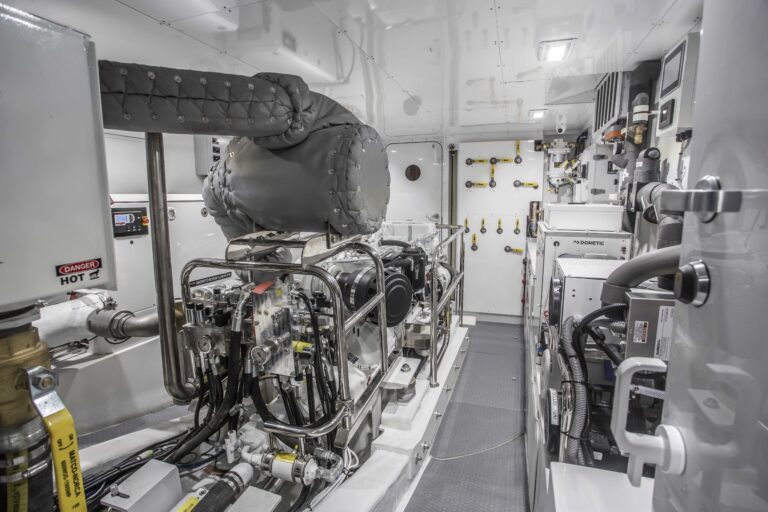The belts that drive your engines accessories, which often include the raw-water pump, circulator pump, and alternator, will typically provide reliable trouble-free service, provided they are properly maintained and replaced when approaching the end of their useful lives. Many cruisers neglect this all-too-important component until disaster strikes. Once the belt breaks, all of these vital systems grind to a haltliterally. The raw-water pump stops pumping sea water, the circulator pump stops circulating coolant, and the alternator no longer produces electricity. While you may not immediately notice the loss of an alternator, rest assured, you will quickly become aware of the loss of sea water and coolant as the temperature gauge climbs into the red and the overheat alarm sounds. (Your engine is equipped with operating versions of both of these instruments, right?)
SERPENTINE AND V-BELTS
The belts used to power these accessories are usually of the V variety, although the ribbon-shaped flat serpentine belts have now become the norm for many marine engines. Often, one V-belt may do double duty, providing rotary power from the crankshaft pulley to both the alternator and circulator pump, while another belt will help the raw-water pump do its thing. One serpentine belt, on the other hand, will typically operate all accessories. I clearly recall working on my first serpentine belt-equipped marine engine; it was a delight to say the least. Not only are three or four belts replaced by one, tensioning is nearly always automatic so theres little worry about slipping or damage caused by a belt thats too tight.
Ordinary V and serpentine belts are, with a little knowledge, easily serviced, adjusted (where necessary), and replaced. Just to give you an idea of the energy that a belt may be called upon to transmit, a high-output alternator of 125 amps will require, after allowances are made for friction and electrical inefficiencies, roughly 5 or 6hp, all of which is carried by the belt or belts. Generally speaking, for V-belt systems, conservative installations will resort to double belts when amperage exceeds 100 amps.
TIGHT, BUT NOT TOO TIGHT
Begin by inspecting your engines belts. Im often asked, how tight should my belt be? Without a tool for measuring this, thats a subjective question, however, the answer simply is, tight enough so they dont slip, but no tighter.
If a belt is slipping it wont turn its related accessory properly and it will wear out and break prematurely. If its too tight, it will accelerate wear on bearings and seals. If you see any evidence of belt dust on the front of the engine or the alternator casing and fan, its so fine and oily that its often mistaken for an oil leak, then the belt is either slipping or misaligned. If the belt and/or pulley show signs of glazing, a particularly smooth, shiny appearance, it means the belt is slipping. A glazed belt must be replaced, but the glaze on a pulley can be broken or dressed using 220-grit sandpaper.
Slippage is an insidious problem where belts are concerned, as they dont always provide an outward indication that the problem is occurring. Because of the load they impart on belts, alternators are among the most notorious culprits when it comes to belt slippage. Slipping belts create friction and heat. In some cases, a chronically slipping belt can cause an alternator pulley to become so hot it will turn purple. The heat created at the pulley may travel into the alternators shaft and onto its windings, where it will upset the magnetic field, which in turn will reduce or eliminate the output altogether. If upon start-up you hear the familiar belt squeal, even momentarily, the installation should be inspected and the cause for slippage should be corrected. Its likely that the belt is slipping even when its not broadcasting its shrill bleat.
To tension a conventional V-alternator or water-pump belt, use the handle of a hammer as a lever to pry the accessory away from the crankshaft pulley, then tighten the fixing bolt. Threaded spreader tools are available to make this task easier and some aftermarket high-output alternator installations incorporate this into their design. Finally, ensure that each belts profile properly matches every pulley over which it turns. The belt should be even with or stand slightly proud (no more than 1/16 of an inch) of the top of the pulley walls. V-belts that ride deep within and below the rim of the pulley are of an undersized cross section and are likely to slip as a result of reduced surface area contact. Such mismatched belts often occur on alternators because they are likely to be replaced at some point in an engines life.
Serpentine belts have no such issues; however, they can suffer from their own shortcomings. Perhaps the most common serpentine belt failure mode involves misalignment with an idler or accessory pulley, which will result in the belt wearing out prematurely, often along one side. The wear is characterized by exposed belt filament. The cause for this misalignment is nearly always an improperly installed aftermarket accessory such as an alternator or a worn-out tensioner pulley. In either case, the problem should be corrected immediately.
INSPECT REGULARLY
Belts are comparatively inexpensive and its cheap insurance to replace them every two years or 400 hours, whichever comes first. Remember, a new belt may require adjustment and re-tensioning several times in the first 50100 hours of use. Thereafter, you should inspect belts closely once a month and casually every time you are in the engine room, which I hope is often.
